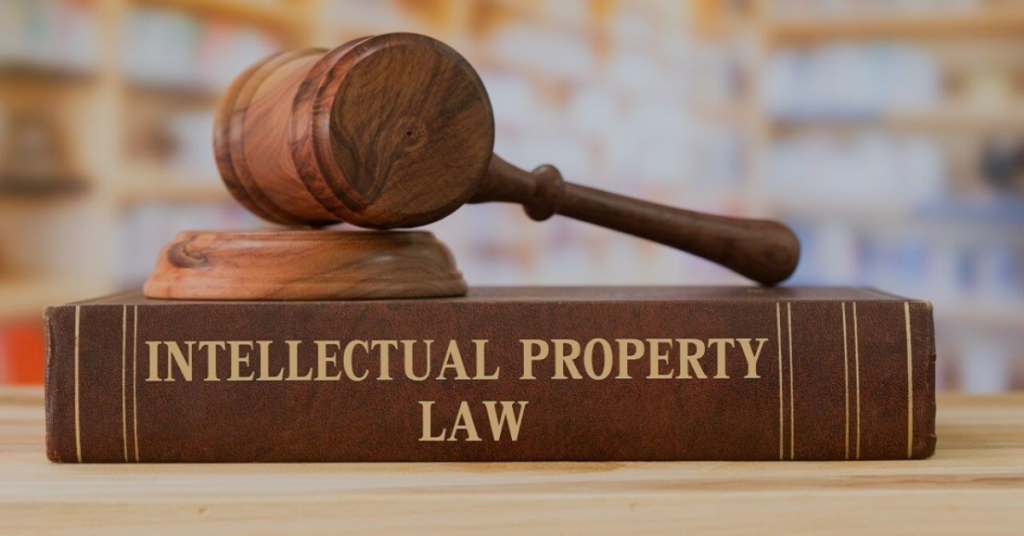Chandigarh Building Rules, 2017: How Rule 16 Shapes Property Dispute Resolutions in Partition Suits
Partition suits are a common occurrence in India, particularly in urban areas like Chandigarh, where land value is high and familial joint ownership is prevalent. Disagreements often arise over the division of property, especially when structures have been erected on the land. The Chandigarh Building Rules, 2017, play a significant role in these disputes, and understanding Rule 16 is crucial for navigating such legal battles. This article delves into the intricacies of Rule 16 and its impact on property dispute resolutions within the context of partition suits filed in Chandigarh.
Understanding Partition Suits in Indian Law
A partition suit is a legal action filed to divide joint property amongst its co-owners. Under Indian law, specifically the Partition Act of 1893, co-owners have the right to claim their share of the property. When co-owners cannot agree on how to divide the property amicably, they can file a partition suit in the relevant court.
The process typically involves:
- Filing the Suit: A co-owner (the plaintiff) files a suit in the court with the appropriate jurisdiction, outlining the property details, ownership shares, and the desired division.
- Issuing Summons: The court issues summons to the other co-owners (the defendants), notifying them of the lawsuit.
- Filing Written Statements: The defendants file written statements, presenting their version of the events and their claims regarding the property division.
- Evidence and Arguments: Both parties present evidence (documents, witness testimonies, etc.) to support their claims. The court hears arguments from both sides.
- Preliminary Decree: If the court finds that the plaintiff is entitled to partition, it passes a preliminary decree. This decree declares the rights and shares of each co-owner in the property.
- Appointment of a Commissioner: The court usually appoints a commissioner (often an architect or civil engineer) to physically inspect the property and propose a plan for partition.
- Final Decree: After considering the commissioner's report, objections (if any) from the parties, and further arguments, the court passes a final decree. This decree specifies the exact division of the property and assigns portions to each co-owner.
- Execution of the Decree: The final decree is executed, meaning the physical division of the property is carried out according to the court's order.
The Significance of Building Rules in Partition Suits
Building rules are crucial in partition suits because they govern the legality and permissible construction on a property. In Chandigarh, the Chandigarh Building Rules, 2017, set the standards for building construction, including:
- Setbacks: The minimum distance a building must be from the property boundaries.
- Coverage: The maximum area of the plot that can be covered by construction.
- Floor Area Ratio (FAR): The ratio of the total built-up area to the plot area.
- Height Restrictions: Limits on the height of buildings.
- Permitted Use: The designated use of the property (residential, commercial, etc.).
During a partition suit, the court must consider these rules to ensure that any proposed division of the property is legally compliant. A division that violates building rules may be deemed invalid or require modifications to comply with the regulations.
Deep Dive into Chandigarh Building Rules, 2017
The Chandigarh Building Rules, 2017, aim to regulate building construction activity in the Union Territory of Chandigarh. These rules cover a wide range of aspects, from obtaining building permits to ensuring structural safety and environmental sustainability. They are crucial for maintaining the city's planned character and ensuring the orderly development of construction.
Key aspects of the Chandigarh Building Rules, 2017 include:
- Building Permit Process: Procedures for applying for and obtaining building permits.
- Architectural Control: Guidelines for architectural design to maintain the city's aesthetic standards.
- Structural Safety: Requirements for structural design and construction to ensure the safety of buildings.
- Fire Safety: Regulations for fire prevention and protection.
- Accessibility: Provisions for accessibility for persons with disabilities.
- Energy Efficiency: Measures to promote energy conservation in buildings.
- Rainwater Harvesting: Requirements for rainwater harvesting systems.
- Solid Waste Management: Guidelines for solid waste management during construction and occupancy.
Rule 16 of the Chandigarh Building Rules, 2017: A Critical Analysis
Rule 16 of the Chandigarh Building Rules, 2017 specifically addresses the scenario of existing buildings and their impact on proposed construction or division of property. While the exact wording of Rule 16 needs to be verified from the official gazette notification, the following interpretation is generally understood based on its practical application and legal interpretations in related cases:
- Regularization of Minor Deviations: Rule 16 typically provides a mechanism for regularizing minor deviations from the building rules in existing buildings. This is significant in partition suits because many older properties may have minor violations due to changes over time or differing interpretations of rules in the past.
- Impact on Partition: The existence of deviations, even minor ones, can complicate the partition process. The court needs to determine whether these deviations can be regularized under Rule 16 or whether they need to be rectified as part of the partition process.
- Commissioner's Role: The commissioner appointed by the court plays a crucial role in assessing the building's compliance with the rules, including identifying any deviations and their potential impact on the partition. The commissioner's report will often cite Rule 16 in the context of regularizing existing structures.
- Financial Implications: If rectifications are required, the court must determine who bears the cost. This can be a significant point of contention between the co-owners.
- Equitable Division: The court strives for an equitable division of the property, taking into account the existing structures and their compliance with the building rules. A co-owner who receives a portion with significant deviations may be entitled to compensation or adjustments in the division of other assets.
Illustrative Scenarios:
To understand the practical application of Rule 16 in partition suits, consider these scenarios:
- Scenario 1: Minor Setback Violation: An existing building has a minor setback violation (e.g., a wall encroaching slightly into the required setback area). Rule 16 might allow this deviation to be regularized without requiring demolition, facilitating a smoother partition. The court would likely consider factors like the extent of the encroachment, its impact on neighbors, and the feasibility of rectification.
- Scenario 2: Unauthorized Construction: An existing building has an unauthorized extension (e.g., an extra room built without permission). Rule 16 might allow regularization if the extension meets certain criteria (e.g., compliance with FAR and height restrictions). If regularization is not possible, the court might order the demolition of the unauthorized construction as part of the partition process.
- Scenario 3: Change of Use: A portion of the property has been converted to a different use than originally permitted (e.g., a residential portion used for commercial purposes). Rule 16, coupled with other relevant regulations about land use changes, would be considered. The court would need to determine whether the change of use is permissible under the current zoning regulations and whether it can be regularized. If not, the court might order the co-owner to revert to the original permitted use.
Legal Considerations and Case Laws
While specific case laws directly referencing Rule 16 in Chandigarh partition suits may be limited in publicly accessible databases, the general principles of property law, building regulations, and equitable partition are well-established. Courts rely on these broader principles when interpreting and applying Rule 16.
Key legal considerations include:
- Doctrine of Equitable Partition: Courts aim for a fair and equitable division of property, considering all relevant factors, including existing structures, their condition, and their compliance with building rules.
- Principle of "As Is Where Is": While the court strives for equitable partition, it may sometimes be necessary to divide the property "as is where is," meaning the co-owners receive their respective shares with existing imperfections or deviations. This is more likely when the cost of rectification is disproportionately high or when it would significantly delay the partition process.
- Burden of Proof: The burden of proving non-compliance with building rules typically rests on the party alleging the violation.
- Expert Testimony: The court may rely on expert testimony from architects, civil engineers, or town planners to assess the compliance of the building with the rules and to propose feasible solutions for rectification.
- Land Use Regulations: The relevant land use regulations (e.g., zoning laws) must also be considered in addition to the building rules.
Relevance of Other Legal Provisions:
Besides Rule 16 and the Partition Act, other legal provisions are relevant in property dispute resolutions:
- Transfer of Property Act, 1882: Deals with the transfer of property rights, including ownership, mortgage, and lease.
- Easements Act, 1882: Governs rights of way and other easements that may affect the division of property.
- Specific Relief Act, 1963: Provides remedies for breach of contract and other legal wrongs.
- Local Municipal Laws: Chandigarh Municipal Corporation Act and bylaws also govern property matters.
Practical Implications for Co-Owners
For co-owners involved in a partition suit in Chandigarh, understanding Rule 16 and its implications is essential:
- Thorough Due Diligence: Conduct a thorough inspection of the property to identify any existing deviations from the building rules.
- Obtain Expert Advice: Consult with an architect or civil engineer to assess the extent and implications of any deviations.
- Gather Documentation: Collect all relevant documents, including building permits, approved plans, and property tax records.
- Negotiate Amicably: Attempt to negotiate an amicable settlement with the other co-owners, taking into account the building rules and potential rectification costs.
- Seek Legal Counsel: Consult with a lawyer experienced in property law and partition suits to understand your rights and obligations.
- Prepare for Court Proceedings: Be prepared to present evidence and arguments in court to support your claims.
- Cooperate with the Commissioner: Cooperate fully with the commissioner appointed by the court and provide them with all necessary information.
- Consider Alternative Dispute Resolution: Explore alternative dispute resolution methods, such as mediation or arbitration, to potentially resolve the dispute more quickly and cost-effectively.
Conclusion
Rule 16 of the Chandigarh Building Rules, 2017, plays a crucial role in shaping property dispute resolutions within partition suits. While its precise interpretation and application depend on the specific facts of each case, understanding its underlying principles is essential for co-owners navigating these complex legal proceedings. By conducting thorough due diligence, seeking expert advice, and engaging in constructive negotiation, co-owners can increase their chances of achieving a fair and equitable partition of their property. Furthermore, understanding the interplay between building rules and other relevant legal provisions is crucial for a successful outcome in partition suits filed in Chandigarh.




